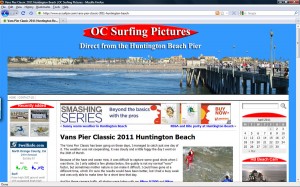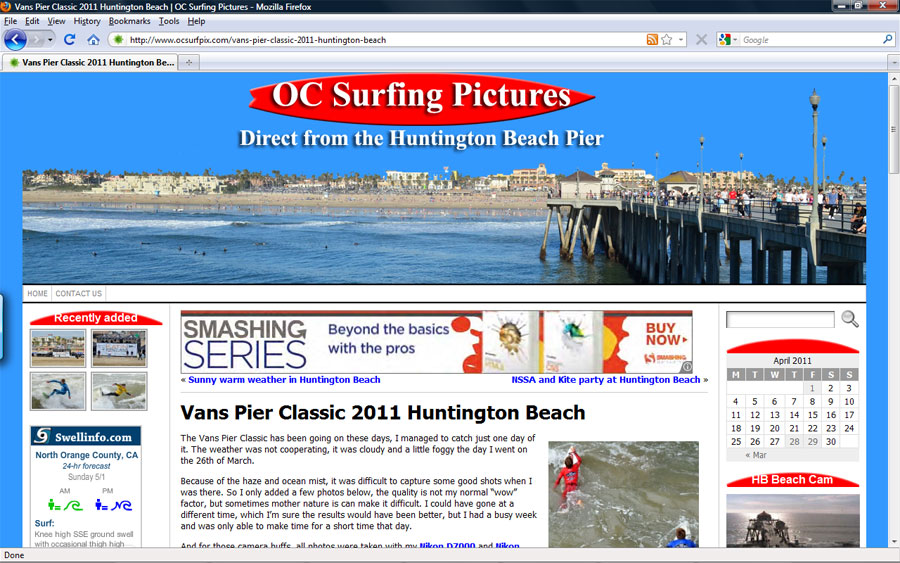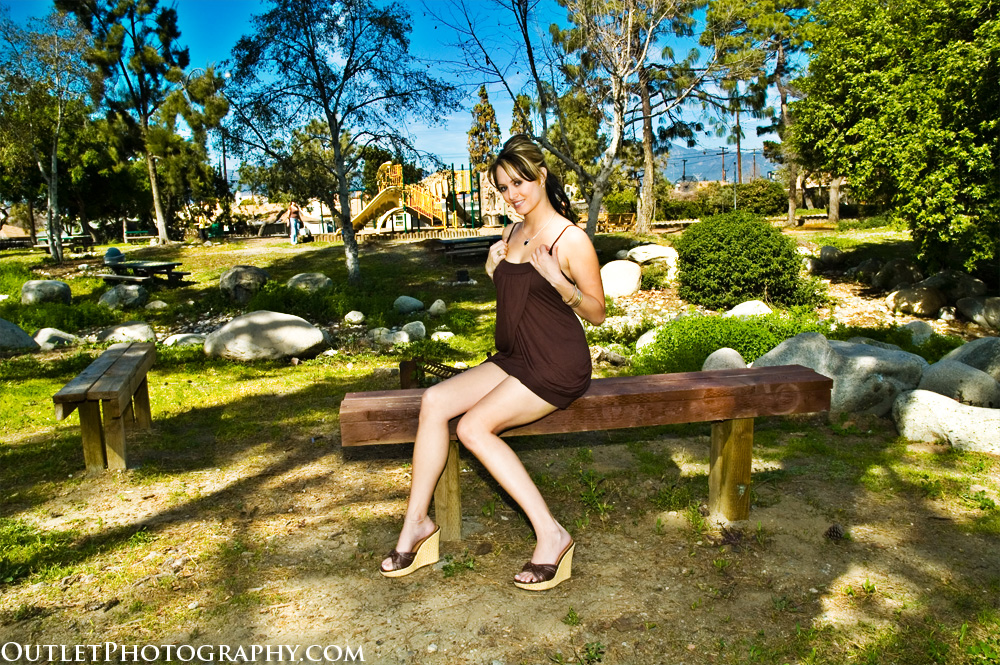How to start a photography blog website

These days many photographers have their own photo blog. Photographers have two choices, pay to have someone create one or teach yourself how to do it. If you don’t want to pay someone, this article will help you start one.
Why start a photo blog?
First you must understand the difference between a photography website and a photo blog. Most photographers have a website. These are normally sites with a fixed number of pages. Unfortunately most are created with Flash software, why “unfortunately”, because sites are very difficult for the search engines to “crawl”, thus getting less natural traffic.
I’ll touch more on the flash issue later, but for now, whether a photography website is built with flash or not, the sites are rarely updated. A photography blog or a “blog” within a photography site is constantly changing. Search engines love new original content and blogs, if updated often, provide it.
Also, having your own photography blog gives you control of what you share to the public. Using Flickr, Facebook pictures, Smugmug or other photo sharing sites is fine, but ultimately it’s nice to have control of your own content. Plus, those other sites only contributes to them (not you) making money.
Free or own your domain?
Before you start a blog, a big decision needs to be made; host your site on a free hosting site like Blogspot.com or pay a monthly fee and have it hosted with your own domain name?
Google’s Blogspot is a great way to go the free route, they provide templates and take care of the SEO stuff. It’s the easiest way if you don’t know anything about blogs. However, tweaking the design and graphics for the site are still up to you. The downside, you don’t get a unique domain name, instead Blogspot gives you a url like this; http://yourblogname.blogspot.com, not exactly a short domain name. Second, if later you want to transfer your site to your own domain name, you may lose a lot of Google search value, since all the blog posts urls will change.
Owning your own domain name and hosting it yourself, this is the best option for growth and full control over your blog. I like having full control over my site, plus the learning curve over the free hosting option is not that much more, so I tend to go with my own domain and hosting.
Now for the downside of owning your own domain and paying for hosting. The cost; registering a domain and owning it for a year is $7.95 through Godaddy.com using 2011 promo codes. Hosting your site will be about $5-$9/month. For new blog websites, most people use Bluehost or Hostgator. The first one charges about $6/month, but you must pay the entire year upfront, the second costs $9/month but you can pay month to month. I’ve used both and are equal in most ways, except Hostgator has a few more options like less downtime and better customer service, making it a little better. This is why I host OutletPhotography on Hostgator. Use this code OutletPhoto and get $9.94 off a hosting package.
WordPress or TypePad…which to choose?
Choosing which platform to run your photo blog only applies if you decided to own your domain and host it yourself. If you chose to use a free blogging site like Blogspot.com or WordPress.com, they have already made the decision for you.
For self hosted photo blogs, WordPress and TypePad are the most used, but in reality, WordPress is the big boy in the of the two. It’s an open source platform with lots of support and upgrades. What does this mean for you? It means you can use it for free, get free upgrades, use free themes (I’ll get into this later) and free plugins to enhance your site. Needless to say I recommend WordPress. Please note that when I say “WordPress”, I mean the platform software, not the site wordpress.com, which is a free blogging site like Blogspot.
WordPress installation, Themes and Plugins.
No matter which hosting company you choose, most major sites now have quick “one click” installation options for WordPress. Which means you can install the WordPress platform into your site. If you have an existing static photo website, you can also add WordPress to run the blog portion of your site. I’ve found that Hostgator has the easiest install process than Bluehost.
Once WordPress is installed, you’ll see that the platform uses the default theme “Twenty Ten“. The easiest way to describe what a theme is to think of it as a “template” with the ability to make adjustments by the user. There are hundreds of free themes you can download and use besides the default theme. There are also themes that cost money. I suggest starting with some of the popular free themes and see if they meet your needs. You can find a complete list of free wordpress themes here.
As you develop your photo blog, you’ll start to see that plugins can make your site and your life a whole lot easier. You can find a list of free wordpress plugins here. Plugins can add a variety of features to your site. I use several for this photo blog, here are just a few that I recommend:
- Akismet
- Contact Form 7
- ShareThis
- Social Media Widget
- Google XML Sitemaps
- All in One SEO Pack
- WP-PageNavi
- Official StatCounter Plugin
All can be installed directly on your WordPress admin plugin page, it’s not necessary to visit the plugin site, I added the links for informational purposes.
Developing your Photography Blog
Now that you’ve created the “shell” of your photography blog, it’s time to add good content. This is where your commitment and dedication to the site comes into play. Before you launch your first post, go to your Privacy Settings page on your WordPress Dashboard, select “I would like to block search engines, but allow normal visitors“. This will give you some time to write posts, experiment with graphics and fix other temporary glitches that may happen before the search engines begin to crawl your site.
Once you have several posts saved on Draft mode and are ready to publish. Reverse the settings mentioned above on your Privacy Settings page to allow search engines to crawl your site. Then hit publish on your posts and that’s it! Your new photography blog is live and viewable by the entire world!
Photography blog tips.
It’s almost impossible to teach all aspects of creating and updating a photography blog in one article. The information provided above should be used as a starting point to a much longer project.
A few tips I’ve learned during my long process:
Godaddy.com is for buying domain names only, stay away from their hosting packages, they are not as easy to use like Hostgator or Bluehost. And always use promo codes to lower the cost of buying a domain name. Never pay more than $8 or $9 a year for a domain name.
Plan the structure of your photography blog. “Categories” should have a defined structure. For example: Travel Pictures>California>San Francisco
Stay away from an all “flash” website. Many professional photography sites use flash as the main page. You’ve seen these, with music and a very “modern” look. Visually they look great and useful for clients to see your work, but for Search Engine Optimization (SEO) purposes there no good. Why? It’s the url and the coding. A flash page will have a url of domainname.com and that is it. The home, gallery, contact, and any other page is embedded in that same url, so search engines can’t index them separately. Plus, the code of flash does not allow the search engines to crawl the content of each page. No indexing of pages means little or no traffic from search engine results.
*Note: This site is hosted on Hostgator, so this review is based on actual use by us. In addition, for full disclosure, the links above to hosting companies are affiliate links and if you use their service after clicking from this site we may earn a commission. Which we use to continue to provide useful articles for you.

